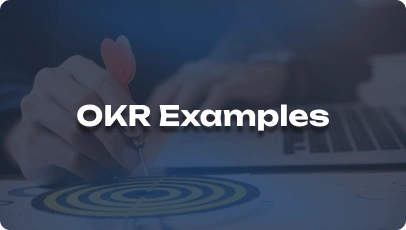Digital Designer Job Description: A Complete Guide for HR Professionals
What does a Digital Designer do, and why is this role essential for your business? In an increasingly digital world, the role of a Digital Designer is crucial for creating visually compelling and user-friendly designs that enhance a company’s brand identity. This guide will break down everything you need to know about the Digital Designer job description, including the key responsibilities, required skills, and how to craft a job description that attracts top talent.
For effective team management and hiring, consider exploring HR software in India to streamline your HR processes.
What is a Digital Designer?
A Digital Designer is responsible for creating engaging designs for various digital platforms, including websites, social media, and mobile applications. They focus on delivering visually appealing and user-centric designs that enhance the user experience and align with the company’s branding goals.
For HR, this means looking for a candidate who possesses a combination of creativity, technical skills, and an understanding of user experience (UX) design principles. To manage payroll efficiently, consider implementing payroll software in India.
In conclusion, having a skilled Digital Designer is essential for any company looking to improve its online presence. For further insights and tools, visit Superworks to discover more resources that can enhance your business operations.
Key Responsibilities of a Digital Designer
A Digital Designer plays a vital role in shaping a company’s visual identity. Here are the core responsibilities that define this role:
- Creating Visual Concepts: Develop design concepts and layouts that communicate the brand’s message effectively across various digital platforms.
- Designing User Interfaces: Design user interfaces for websites and applications that prioritize user experience and functionality.
- Collaborating with Cross-Functional Teams: Work closely with marketing, product, and development teams to ensure designs align with business goals and technical requirements.
- Conducting User Research: Gather feedback from users and stakeholders to inform design decisions and improve usability.
- Staying Updated on Design Trends: Keep up with the latest design trends, tools, and technologies to continuously improve design quality and efficiency.
- Creating Prototypes: Develop prototypes and wireframes to visualize design concepts and gather feedback before implementation.
- Managing Design Projects: Oversee multiple design projects, ensuring timely delivery while maintaining quality standards.
- Maintaining Brand Consistency: Ensure all digital designs adhere to brand guidelines and maintain a cohesive look and feel.
Required Skills and Qualifications
Finding the right Digital Designer means identifying candidates with a blend of creativity and technical skills. Here are the key skills and qualifications to look for:
1. Essential Skills
- Strong Visual Design Skills: Proficiency in design principles, color theory, and typography.
- Proficiency in Design Software: Expertise in tools such as Adobe Creative Suite (Photoshop, Illustrator, XD), Sketch, or Figma.
- Understanding of User Experience: Knowledge of UX design principles and practices, including user research and testing.
- Attention to Detail: A keen eye for detail to ensure high-quality design outputs.
- Communication Skills: Ability to articulate design concepts and rationale clearly to non-design stakeholders.
- Time Management: Strong organizational skills to manage multiple projects and deadlines effectively.
2. Preferred Qualifications
- Education: A bachelor’s degree in Graphic Design, Digital Media, or a related field.
- Experience: 2-5 years of experience in digital design or a related field.
- Portfolio: A strong portfolio showcasing previous design work and demonstrating versatility in design styles.
- Technical Skills: Familiarity with HTML/CSS and basic web development concepts.
3. Personal Attributes
- Creativity: A strong creative vision and the ability to generate innovative design ideas.
- Adaptability: Flexibility to adjust to changing project requirements and feedback.
- Team Player: Ability to collaborate effectively within a team and contribute to a positive work environment.
Take Your Team to the Next Level with Advanced HR Tools!
Streamline & Automate your HR Processes From Hire to Retire
Salary Expectations and Career Growth
Understanding the typical salary range and career trajectory of a Digital Designer can help HR set realistic expectations and attract the right talent.
1. Salary Expectations
- Average Salary: The average salary for a Digital Designer in the U.S. ranges from $55,000 to $90,000 per year depending on experience, location, and industry.
- Location: Salaries tend to be higher in major metropolitan areas like New York, San Francisco, and Los Angeles due to the higher cost of living.
- Experience: Entry-level Digital Designers may start at around $55,000, while those with over 5 years of experience can earn upwards of $90,000.
- Industry: Industries such as tech and e-commerce often pay more due to the high demand for skilled digital design professionals.
2. Career Growth Opportunities
- Digital Designer to Senior Designer: With proven skills and experience, Digital Designers can advance to Senior Digital Designer roles, where they lead projects and mentor junior designers.
- Transition to Leadership Roles: Opportunities to move into leadership positions such as Design Manager or Creative Director, overseeing design teams and strategies.
- Specialization: Some may choose to specialize in areas like UX/UI design, motion graphics, or branding.
- Consulting and Freelancing: Experienced Digital Designers can also branch out into consulting, providing design services to various clients.
3. Skills That Drive Career Growth
- Advanced Design Techniques: Mastery of design tools and emerging technologies can set a Digital Designer apart.
- Leadership Skills: Gaining experience in leading design projects or teams can pave the way for career advancement.
- Continuous Learning: Staying updated with design trends and technology is essential for career growth.
How to Write an Effective Job Description for a Digital Designer
Crafting a compelling job description is crucial to attracting the right candidates. Here’s how to write an effective job description for a Digital Designer:
1. Start with a Catchy Job Title
- Keep it Clear and Specific: Use titles like “Digital Designer,” “UX/UI Designer,” or “Visual Designer.” Avoid vague titles that may confuse applicants.
- Include Level: If the role is for a senior or entry-level position, specify that in the title (e.g., “Senior Digital Designer”).
2. Craft a Compelling Summary
- Describe the Role in One Sentence: Summarize what the Digital Designer will do and how they contribute to the company’s success. For example: “We are looking for a creative Digital Designer to develop engaging and user-friendly digital experiences.”
- Highlight the Importance: Mention why this role is essential to the company’s overall strategy, such as enhancing user engagement and brand identity.
3. List Key Responsibilities Clearly
- Use bullet points to outline the core duties (e.g., designing user interfaces, collaborating with teams, and conducting user research).
4. Specify Required Skills and Qualifications
- Clearly outline essential skills, preferred qualifications, and any necessary certifications or degrees.
5. Include Salary Range and Benefits
- Provide potential candidates with a salary range and highlight benefits like health insurance, remote work opportunities, and professional development.
Conclusion
A well-crafted job description for a Digital Designer not only attracts qualified candidates but also sets clear expectations about the role. By clearly outlining responsibilities, required skills, and growth opportunities, HR professionals can ensure they attract top talent in this competitive field.
In today’s digital landscape, having a skilled Digital Designer on your team is vital for crafting engaging user experiences that drive business success. Take the time to develop a comprehensive job description, and you’ll be on your way to building a strong design team.





